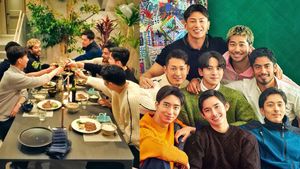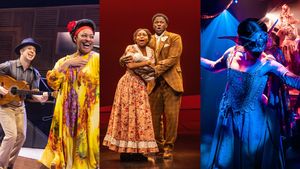Only one-fifth of people globally see LGBTQ+ people represented regularly in visual media, and when they do, the representation is often narrow and stereotypical. But a new project from Getty Images and GLAAD aims to improve the situation.
Getty -- which provides images to media companies, advertising agencies, and publications, including The Advocate -- and the LGBTQ+ media organization today launched the LGBTQ+ Guidebook for Inclusive Visual Storytelling, which gives brands and businesses practical recommendations for confidently making more inclusive visual choices when depicting the broader LGBTQ+ community. Created as part of an ongoing collaboration between Getty and GLAAD, the guidebook is a direct response to Getty research that found overall LGBTQ+ visual representation remains low and is often stereotypical. It follows last December's release of the Getty Images and GLAAD Transgender Guidelines, designed to support Getty Images and iStock photographers and videographers in their efforts to better represent the diversity of the transgender community, addressing terminology, cliches to avoid, and how to create a safe and welcoming set.
"While we know that increased representation positively impacts increased acceptance, our research has also shown that LGBTQ+ individuals remain grossly underrepresented in media," Tristen Norman, head of creative insights for the Americas at Getty Images and iStock, said in a press release. "And even when this community is represented, businesses and media rely too heavily upon stereotypical, inauthentic imagery.
"Furthermore, our research suggests that LGBTQ+ people in countries with less LGBTQ+ representation in the visuals that surround them, including media and advertising, actually report experiencing more anti-LGBTQ discrimination and bias -- for example, in Germany, where representation is lower, discrimination is higher, as opposed to in the U.S. Which is to say that authentic imagery which accurately and positively captures the nuances of this diverse community is not only needed, but can have a positive impact globally."
Getty's 2021 Visual GPS survey found that only 21 percent of global respondents said they saw LGBTQ+ people represented regularly or frequently in visuals (the number for the U.S. was somewhat higher, about one-fourth). The global respondents said 30 percent of such visuals depict gay men as "feminine"; 29 percent show LGBTQ+ people carrying the rainbow flag; 29 percent portray lesbians as "masculine"; and 28 percent such visuals depict gay men as "flamboyant."
Some advertisers are reluctant to depict LGBTQ+ people because of fears that the depictions may be less than authentic and therefore alienate the intended audience. A survey of advertising and marketing executives, conducted in February for GLAAD and Procter & Gamble as part of GLAAD and P&G's Visibility Project, found that nearly 81 percent of advertisers agreed that inauthentic representation of LGBTQ+ people would create a greater backlash than not including them at all, and nearly 80 percent agreed that it is "difficult to adequately represent the LGBTQ community because the community is complicated and has many nuances."
"The guidance we've created with Getty Images seeks to give brands and businesses of all sizes the confidence they need to depict the LGBTQ+ community in inclusive, authentic and thoughtful ways, without fear of backlash or fear of 'getting it wrong,'" Nick Adams, director of transgender representation at GLAAD, said in the release. "Instead of shying away from depictions or relying on stereotypes, we've created guidance on how to authentically represent the LGBTQ+ community in ways that will create lasting connections. Increasing representation of LGBTQ+ people in your communications demonstrates your intentional emphasis around diversity and makes a public commitment of your support for this community."
Norman added,"To create real change for LGBTQ+ representation, we need the advertising and media industry to act. Creatives and marketing professionals have the opportunity to not just encourage the creation of this kind of imagery, but also to choose to use it."
The accompanying images are drawn from Getty's collection of more than 435 million assets, including photos, videos, and music, available through www.gettyimages.com and www.istock.com. They show a diversity of LGBTQ+ representation and experiences. For more info about inclusive representation, the new guidebook is available here.

A diverse group of friends watching TV. Maskot/Getty Images

A nonbinary business owner. Luis Alvarez/Getty Images

A transgender woman listens during a business meeting. Hinterhaus Productions/Getty Images
 Couple taking a selfie. Willie B. Thomas/Getty Images
Couple taking a selfie. Willie B. Thomas/Getty Images





 Couple taking a selfie. Willie B. Thomas/Getty Images
Couple taking a selfie. Willie B. Thomas/Getty Images

































































Charlie Kirk DID say stoning gay people was the 'perfect law' — and these other heinous quotes